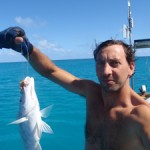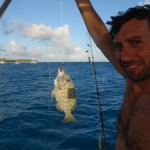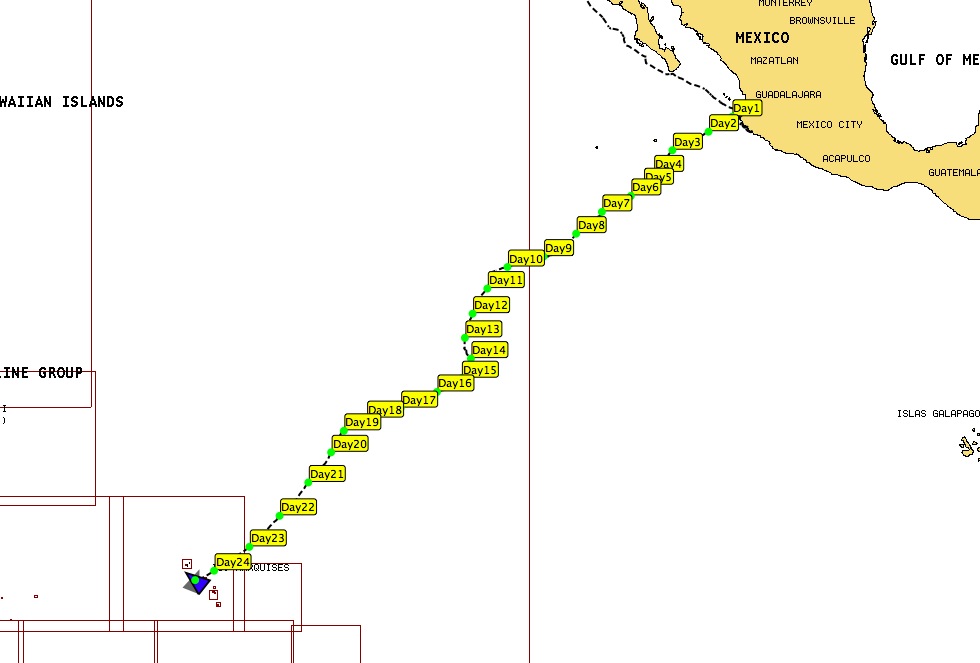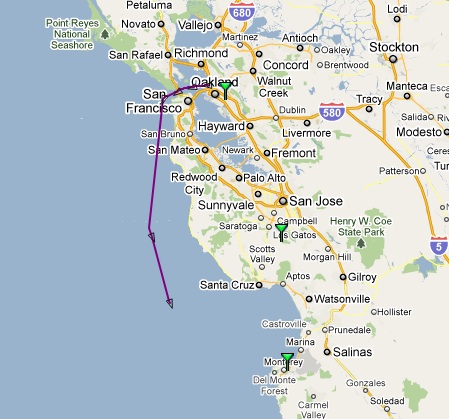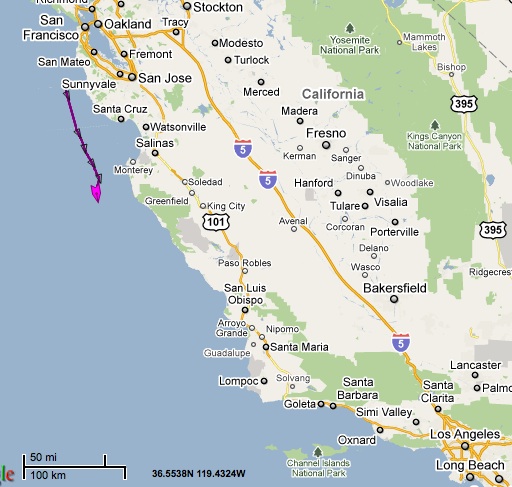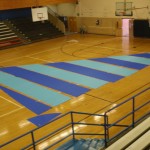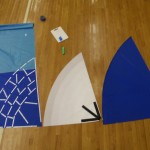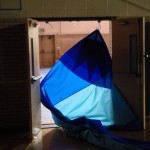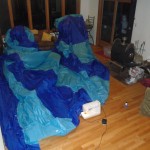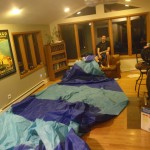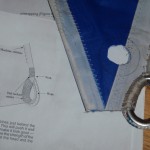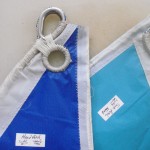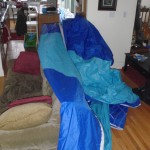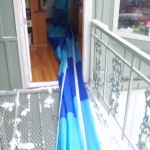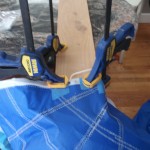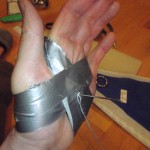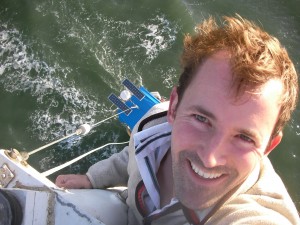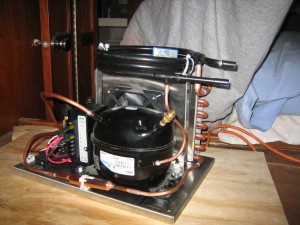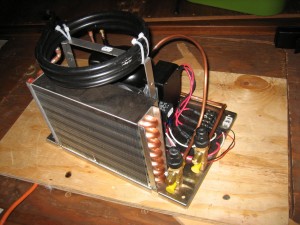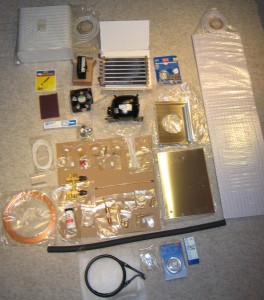Jul 12 2010
Food and Fish
(concerning events: July 3rd -July 6th)
People have lived in French Polynesia for around 2000 years and ever since have been eating fish. Lots and lots of fresh fish. We have not been eating lots and lots of fresh fish. We have been eating little to no fresh fish. This vexes me to no end. We had fresh fish once in the two weeks I have been here. Native Tuomotians Ken and Martin caught it for us.
Karen is a fantastic cook. She probably cooks the most dinners, though I cook my fair share. Matt and Karen seem to have tired of their repertoire of recipes. I certainly haven’t though and everything that Karen makes I think is delicious. Everything that Matt makes I think is delicious. Everything that I make…. well Matt and Karen eat it, so it must be edible.
But we all acknowledge that our meals are with drawbacks. Nearly every meal is ‘x’ number of cans + [either] pasta or rice + alcoholic beverage of choice = meal. Sometimes this is canned spaghetti sauce plus canned chicken plus pasta equals a meal. Sometimes this is canned roast beef + canned corn + canned mushrooms + canned yams + canned gravy + boxed potatoes = meal. I think they are delicious every time. But something fresh would be wonderful.
When Karen makes various fresh bread, it’s a little slice of heaven. Sometimes sourdough english muffin. Sometimes tortillas. Or sourdough french bread. Or puffy donut holes with cinnamon and sugar, oh sinfully delicious. So bread, bread we can do fresh. Otherwise, cans.
I feel like we should be eating fish. For one, it’s free. For two, it’s not cans.
Matt and Karen reported no luck fishing while sailing across the Pacific and while cruising the Marquesas and the Tuomotus. This poor showing on the part of the fish to readily enjoy our lures, combined with Matt’s reticence at the idea of cutting up live things with guts in them has led to a decline in fishing attempts onboard s/v Syzygy. Who can blame them? They never caught anything. With my arrival, I bring fresh hopes and renewed vigor to the idea of fishing. And an indefatigable arrogance that it has to be possible to catch something. Anything.
And I have failed. Failed as all other attempts at trailing lines has failed on s/v Syzygy. Please other cruisers who are able to catch fish regularly, tell us your exact set-up of trolling lines and how you catch fish, down to the minutest detail. Because we are incompetent. We have read a book and we have not learned. Nearly all things done on this boat, all the sailing knowledge, all the boat projects completed are because we read a book and learned about it. We read a book about fishing, but we cannot seem to learn how to fish. Please tell us everything about your set-up. Length of line out, type of knots, length of mono-filament. Type of lure. Color of lure. Number of lures. Depth of lure. Time of day. Depth to ocean floor. Distance to land. Boat speed. Wind speed. Current. Hook size. Hook placement within lure. Allowable rust level on hook. Bait used or not. Leader weight used or not. Chum used or not. Teasers used or not. Pagan gods to whom you might give sacrifice in order to make the ocean share its bounty. Please include video of ceremony, text of chants and incantations, list of all incense types used and step by step instructions for actual sacrifice.
I have, actually, caught some fish. But I was only able to do that at anchor. When we were in Apataki, and in having beer and an excellent lunch at the cargneage(boat haul-out center)/pension/restaurant/happy hour/pearl farm establishment, fishing was brought up with the family who owns all this enterprise, Alfred and his wife. They said they had a surefire way for us to catch fish involving hermit crabs as bait and that next time we come to shore, they would show us. The next day, we show up but Alfred is off fishing and his wife is gone. Karen manages to relate to the very nice ancient lady that met us at the dock (Alfred’s mom??) our intentions. So before we know it, this 80-ish year old woman has grabbed a hermit crab. Matt and I are hustling around trying to watch every little step of what she does. She then gets a hammer, one shot smashes the shell, grabs the hermit crab, one hand around all it’s legs and claws, the other around its guts and rips it in two pieces. She threads it on the hook and done. 30 seconds have passed. I am in awe. In a couple of days, I will no longer be in awe of the process. Instead, I will be a one-man professional hermit crab death squad.
We collect a dozen hermit crabs and head back to the boat. At dusk, apparently good fishing time, I retrieve a hammer, a cutting board, and a hook. I ask Karen to retrieve a video camera. The nice ancient lady completed the steps in about 30 seconds. It takes me 30 minutes. So despite that it is now dark, I try to fish anyway. Nothing. Nothing. Nothing. I take solace in the fact that it is pitch black out and vow to try again in the morning.
In the morning at 6 am I begin setting up to try again. Success! Within a half an hour I’ve hooked two fish. Karen comes on deck. I ask her what to do now that I have a fish flopping around in a large green bin. She says I have to kill it. I don’t know how to do that I reply. She fetches the book. We read it. We learn. The fish dies. Knife shot to the brain, one inch behind the eye.
After reading the book for each step in the process of gutting and cleaning we take the fish into shore to make sure that we can eat them. Some fish you can’t eat because of a nasty little disease called ciguterra I refer you to a blog post from our good friends Mike and Hyo aboard Io, Mike is a marine biologist and so can explain all the nastiness of ciguterra better than I.
Matt gets the job of cooking the fish and that night we finally dined on fresh fish. The next night we again dined on fresh fish. It was wonderful, albeit a bit bony. Then we moved anchorages, losing our source for local knowledge of ciguterra (Different fish on different atolls have it) and we have not had fish again. Back to cans.
So fellow cruisers, please help us become better fishermen and fisherwomen. Please help us spare the cans.
